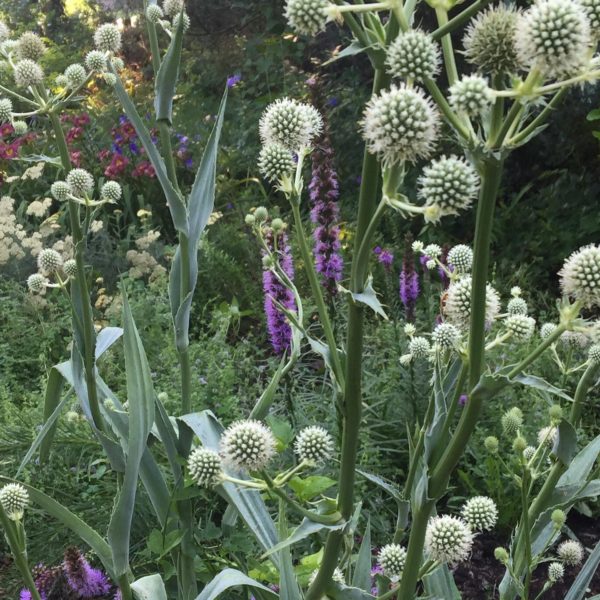Beautiful native growing to 4′ tall with glaucus, yucca-like foliage topped with clusters of white, globe-shaped flowers in late summer through early fall. Wonderful ornamental qualities with excellent drought and heat tolerance.
According to the U.S. Forest Service
In the prairie or in the garden, rattlesnake master is a favorite of native insects. Monarch butterflies, skippers, and other butterflies visit the flower heads for nectar. Soldier beetles visit the flowers to eat pollen; major pollinators include a diversity of bees, wasps, and flies.
One specialized insect, the rattlesnake master stem-borer (Papaipema eryngii) is dependent of the rattlesnake master to complete its life-cycle; this moth’s caterpillars burrow in the stems and roots of this plant. The surviving populations of this moth are now restricted to prairie remnants that support large populations of rattlesnake master. The moth’s natural range is limited to the central United States.
Another dependent insect is the larva of a seed-eating moth (Coleotechnites eryngiella) that burrows through the flowerheads, eating seeds as it grows. Caterpillars of the black swallowtail butterfly (Papilio polyxenes) occasionally feed on the leaves, but the caterpillars prefer other members of the carrot family (both native and introduced). In our native prairies, rattlesnake master is a characteristic flowering plant that contributes greatly to insect diversity.
